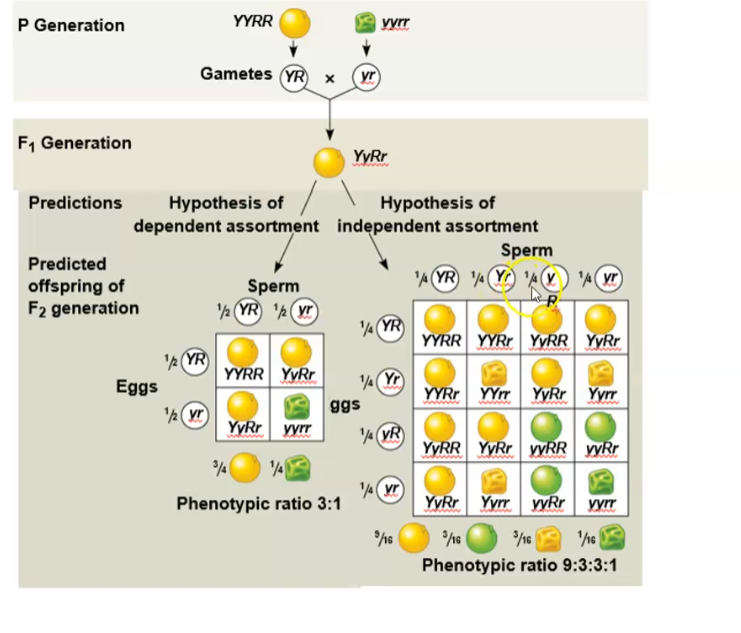Mendel and Genetics
Basic Principles of Genetics
Until the 1840s, understanding of heredity was limited to theories:
Blending hypothesis: traits from parents blend (e.g., flower colors).
Example: Snapdragons with red and white flowers phenotypically produce pink offspring.
Mendel's Experiments with Garden Peas
Gregor Mendel conducted experiments leading to modern genetics concepts:
Introduced the particulate mechanism, where traits are passed via discrete units called genes.
Key Terminology:
Characteristic: heritable feature (e.g., flower color).
Trait: variant of a characteristic (e.g., purple or white flowers).
Advantages of Pea Plants
Several advantages allowed for Mendel's work:
Short generation time.
Large number of offspring.
Controlled mating (self- and cross-pollination).
Mendel's Methodology
True-breeding varieties: purebred strains producing consistent traits over generations.
Hybridization: mating two contrasting true-breeding varieties.
P generation: true-breeding parents.
F1 generation: hybrid offspring.
F2 generation: offspring from crossing F1 individuals, exhibiting a 3:1 ratio of traits.
Mendel's Laws of Inheritance
Law of Segregation: alleles for a heritable character separate during gamete formation.
Law of Independent Assortment: alleles for different traits segregate independently.
Detailed Ratios from Mendel’s Crosses
Example ratios in F2 generation:
Purple (dominant): 705
White (recessive): 224
Ratio: $3.15:1$ (Purple:White)
Other observed ratios for different traits often approximate $3:1$ or $9:3:3:1$ in dihybrid crosses.

Key Concepts in Genetic Inheritance
Alleles: different versions of genes (e.g., purple vs. white).
Homozygous: two identical alleles (e.g., PP, pp).
Heterozygous: two different alleles (e.g., Pp).
Phenotype: observable traits.
Genotype: genetic makeup.
Testcross: determines genotype of an individual with a dominant phenotype.
Complex Patterns of Inheritance
Incomplete Dominance: heterozygote has a phenotype that is a blend.
Codominance: both alleles expressed distinctly (e.g., AB blood type).
Pleiotropy: one gene influences multiple traits.
Epistasis: one gene's effects mask another.
Polygenic inheritance: multiple genes influence a trait (e.g., skin color, height).
Genetic Disorders
Recessively inherited disorders (e.g., cystic fibrosis, sickle-cell disease).
Dominantly inherited disorders (e.g., Huntington's disease).
Multifactorial disorders: influenced by both genetics and environment.
Genetic Testing and Counseling
Genetic counselors assist in understanding genetic disorders and implications for offspring.
Techniques include amniocentesis, chorionic villus sampling, and newborn screening for disorders like PKU.
Summary of Genetic Inheritance Principles
Mendel's work laid the foundation for modern genetics and our understanding of heredity.
While basic Mendelian principles apply, many traits exhibit more complex inheritance patterns influenced by multiple genes and environmental factors.